Preserving Wisconsin's prairies; what you can do

Preserving Wisconsin's prairies; what you can do
We've lost 95% of our prairie land in the United States. There are a few Wisconsinites that are trying to change that number and you can to in your own yard.
MILWAUKEE - You might have heard of falling Monarch Butterfly numbers or the rapidly declining number of bees, but there is something you can do to stop it.
Wisconsin and other Midwest states use to be home to the largest continuous ecosystem in America of prairie and oak that supported countless insects, birds and mammals. Since the 1800s, most of it has been cleared for agriculture and development, but it doesn't mean all is lost.
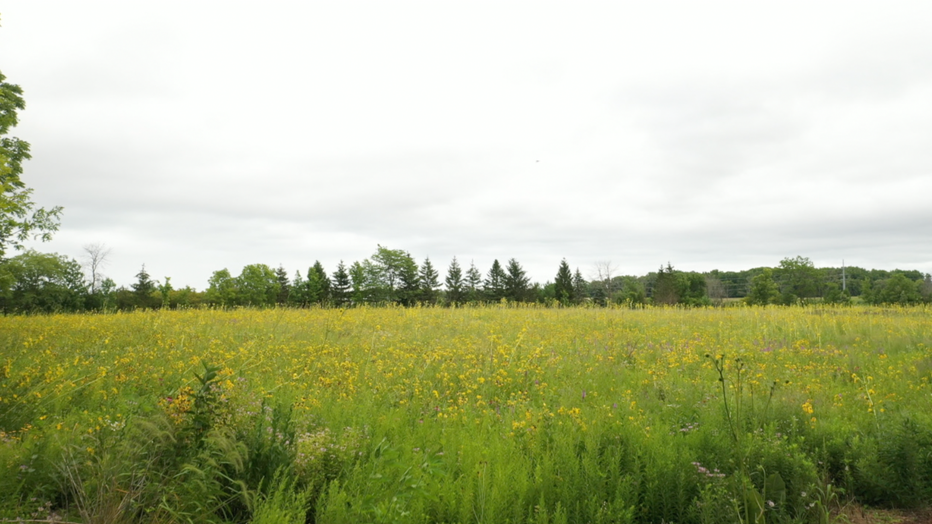
Native prairie has dozens of different plants every step you take with hundreds of different insects they support. It was once our largest ecosystem in America.
A major issue with native species is not many places sell them. They're seen as weeds, but when planted properly, they create an incredible mosaic of color. At the bottom of this article, you'll find native plant sellers in our area.
SIGN UP TODAY: Get daily headlines, breaking news emails from FOX6 News
Planting native species in your yard can help all kinds of insects such as the Monarch Butterfly. Milkweed is the exclusive host plant for Monarchs, they spend their entire larva life cycle on this plant in order to grow.
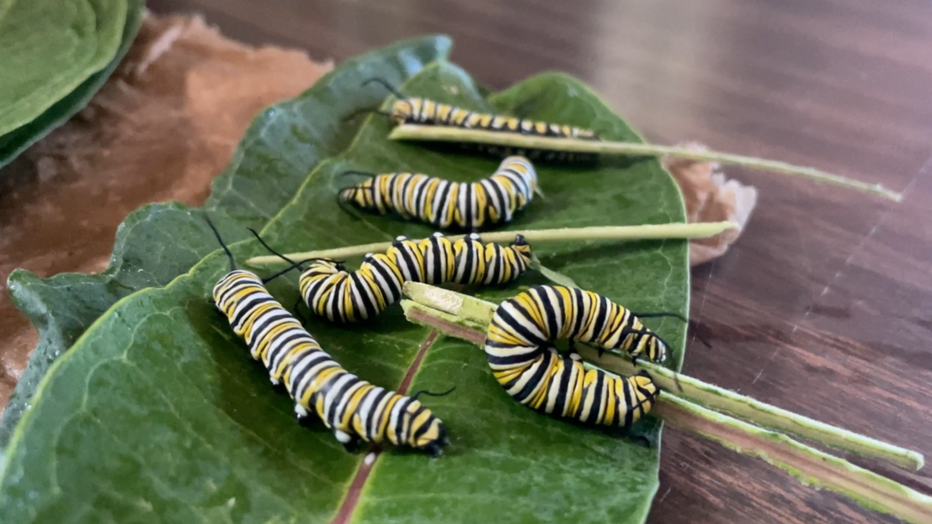
Monarch caterpillars eating away on a Common Milkweed leaf, milkweed species are their exclusive host plant, they can't eat anything else.
Using historical ecosystem data and piecing together remnant populations, the University of Wisconsin and the Department of Natural Resources can estimate what was here before settlement.
Representing prairie and savanna ecosystems with 100 pennies shows nearly half of the state was once somewhat of a prairie ecosystem.
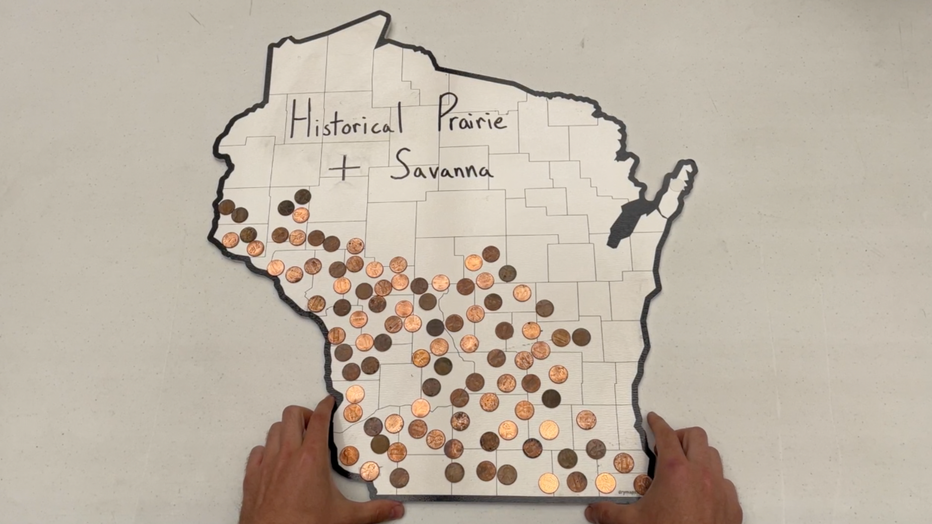
Represented by pennies this was the general spread of Wisconsin prairies and savannas before settlement
In modern times, only a few remnant large prairies remain. Many small sanctuaries in between that make up less than 5% of its original range.
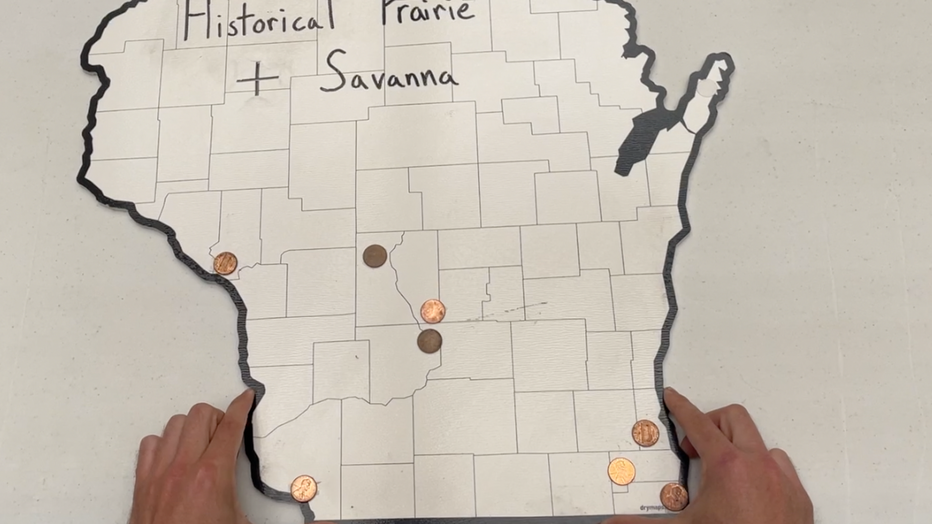
This is what we have now. Just a tiny fraction of what once stood
One way we can help fill in these large gaps is by adding native species to our yards, but start small. It takes time, patience and hard work to do it right and prevent invasive species from taking your project over. Planning is key to creating a successful native habitat.
FREE DOWNLOAD: Get breaking news alerts in the FOX6 News app for iOS or Android
To start your yard, at the very least, you'll need one species of milkweed such as Orange Butterflyweed, Common Milkweed or Swamp Milkweed; one species of native mint, such as Monarda, Mountain Mint,or Hyssop and one native species of flower you love the look of. With that, you'll be capable of hosting dozens of different species of pollinators.
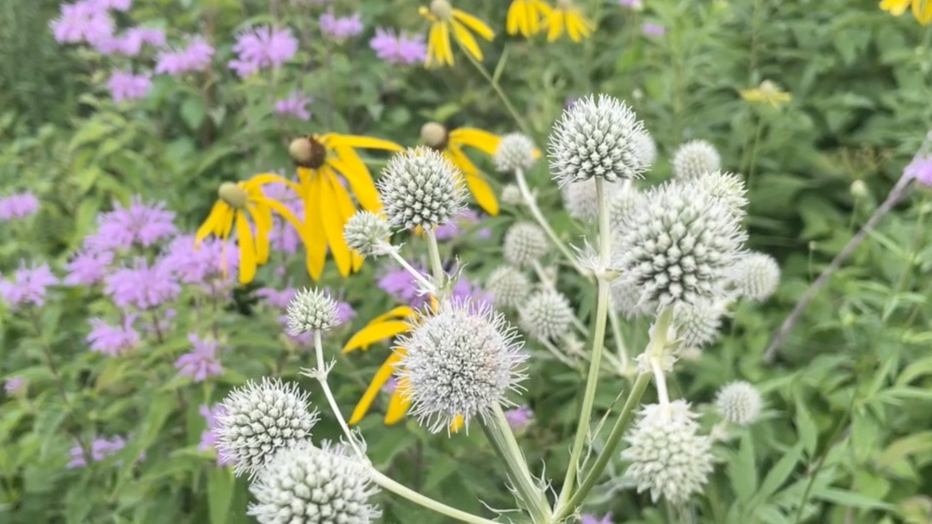
Monarda, Yellow Coneflower, and Rattlesnake Master which are all native wildflower species to Wisconsin
Prairie Moon Nursery, Prairie Nursery, Prairie Future Seed Company, Johnson's Tree Nursery and Minors Garden Center are all great places to find native plants and resources on how to start a prairie of your own here in Wisconsin.
If you need some inspiration on what is possible if done right here are some of FOX6's Eric Manges' favorite prairies in southeast Wisconsin:
- Chiwaukee Prairie: Off Sheridan Road past 104th St. in Kenosha County
- Lakeshore State Park: Adjacent to the Maier Festival Park (Summerfest grounds)
- Badertscher Prairie: Off Field Drive in Muskego
- Retzer Nature Center: In Waukesha, should be easy to find on any mapping application
- Virmond Park: N. Lakeshore Drive in Ozaukee County
Another great tool to use in order to plan your yard is Native Plant Finder, a website where you can enter your ZIP code to find out how to maximize your yard's ecological potential. Googling "native plant sellers near me" is another great way to find places that can help improve your yard's native biodiversity.

